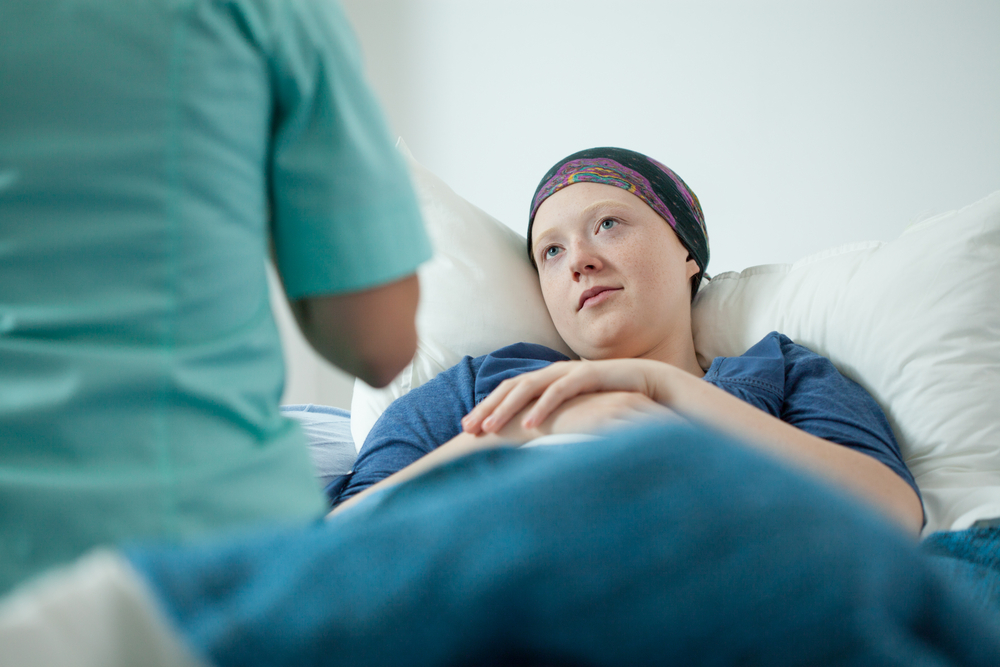When Sabrina Acosta Obeso was preparing to undergo breast cancer surgery last year, she vaguely recalls seeing something in her paperwork about a potential side effect of cancer treatment called lymphedema. But she admits, she didn’t pay too much attention.
“Then, about two weeks after my surgery, I started to notice swelling in my hand,” she says. “I have since lost some of my fine motor skills in my fingers, and I have a hard time grasping.”
What is Lymphedema?
Lymphedema is a build-up of lymph fluid in the fatty tissues just under your skin. This build-up causes swelling, most often in the arms or legs, although it can occur in other parts of the body, too.
There are two types of lymphedema:
- Primary lymphedema is caused by the abnormal development of the lymphatic system. Some people are born with it.
- Secondary lymphedema is caused when the lymphatic system is damage in some way. For cancer patients, it may happen after lymph nodes are removed, or when they receive radiation therapy or undergo surgery.
Learn the signs of cancer-related lymphedema and when to seek treatment.
Treating Lymphedema
When the swelling in her hand and arm began, Sabrina reported it to her oncologist at Willamette Valley Cancer Institute, who immediately referred her for treatment at Healing Spirit Integrative Health Center in Eugene.
Once a week, Sabrina meets with Carma Douglas, a registered nurse, and certified lymphedema therapist, who applies a technique called manual lymph drainage to help the lymphatic system drain away excess fluid in the body’s soft tissues.
Manual lymph drainage looks a lot like massage, but Carma says while relaxing for the patient, it’s quite different than traditional massage techniques.
“It’s really gentle. It’s kind of a stretch-pull of the skin which flattens out that interstitial space,” she says. “We can lift and drain a swollen area and move the fluid to an area that’s more vital, that can take it deeper and move the edema away.”
There is no cure for lymphedema, but early and careful management can reduce symptoms and keep it from getting worse. Learn ways to reduce your risk for lymphedema.
Compression Garments to Help Manage Lymphedema
Compression garments, such as sleeves and stockings, are often used to manage lymphedema. They are made of fabric that puts a controlled amount of pressure on different parts of the arm or leg to help move fluid and keep it from building up. These garments should fit well and be worn properly. Do not use a poorly fitting compression garment under any circumstances. This may increase your risk for lymphedema or worsen it.
While lymphedema treatment services are covered by most insurance providers, the cost of compression garments is not. And since patients may require a custom-fitted garment or several-sized garments during treatment, as the swelling in their affected extremity is reduced, it can become a financial challenge for patients. Healing Spirit Integrative Health Center accepts donations of gently used compression garments, as well as donations to purchase new ones, for patients who cannot afford the expense.
If you have compression garments to donate, or to learn more, contact Susan Johnson at Healing Spirit Integrative Health Center at 541- 683-1125.
Improving Your Quality of Life
Lymphedema is not typically painful, but it can be limiting and affect how a person feels about their appearance.
“Body image is huge in women and men, regardless of the part of the body affected—the arm, leg, torso, face, or neck. Getting people back to feeling comfortable in their own body is a high priority for us,” Carma says.
Since Sabrina began treatment, which involves learning self-care techniques that she can do on her own and wearing a custom-made compression glove on her affected hand, she says she’s noticed a significant reduction in her lymphedema.
“Before, there were times I would come in, and it was hard for me to make a closed fist. After treatment, I’m able to feel the improvement there. It’s wonderful.”



